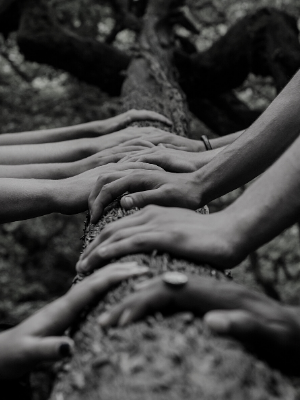 Silvina Moschini explains how she leverages technology and remote work to hack the gender employment gap and empower women.
Silvina Moschini explains how she leverages technology and remote work to hack the gender employment gap and empower women.
I didn’t major in computer science or engineering. My background is in communications and marketing. But, I discovered the power of technology early in my career and I realized that in it lies the opportunity to innovate, disrupt and solve problems.
I had the opportunity to work for tech giants like Compaq and was fortunate to be part of the 1990’s dot-com explosion, leading communications for one of the most successful Latin American startups of that era. Patagon was acquired by Banco Santander, a Spanish bank. The dot-com bubble eventually burst. Shortly after, I was recruited by Visa International as Vice President of Communications for Latin America, leading their FinTech division-the moment when I discovered that my life’s calling was to become an entrepreneur.
The leap to entrepreneurship
After leaving the corporate world, I took a leap of faith and founded a consulting company whose mission was to provide digital transformation for large corporations. As a self-employed entrepreneur, I had the opportunity to live anywhere I wanted, so I moved to Verona—my favorite place in Italy. I had a thriving business and was working with a team of professionals based in all corners of the world. But, I was facing a challenge: I needed more visibility and collaboration with my remote team, because as their leader, I lacked the tools to gauge progress in an effective and transparent way.
Necessity is the greatest driver of innovation, and it was clear to me that technology was the answer to my problem. So, I made it my mission to design and develop a solution that would provide transparency and visibility to help me keep my team accountable while allowing me to make decisions in real-time, and pivot as needed.
In 2012, TransparentBusiness software as a service was born and I began to pioneer the future of work, dedicating myself to transforming the way people work. What started as a solution for my company became an award-winning remote work and enablement tool that is now used by thousands of clients across the world.
From solution to ecosystem
During the initial years, I spent most of my days explaining the benefits of remote work, which often fell on deaf ears. Many business leaders were skeptical about this work model that relied on accountability and transparency instead of in-person, in-office oversight. However, I also began to see a shift, as millennials started to become an integral part of the workforce. The on-demand economy and companies such as Uber, Netflix and Airbnb who were disrupting their industries emphasized the importance of continuous innovation. And, each day the companies we spoke to become more receptive to remote work models.
But, I also knew that the future of work needed more than great software. It needed to connect the dots with the talent that was in search of remote work opportunities. And this is how our Talent as a Service offering was born, starting with Yandiki, a talent marketplace where companies could source creative talent on-demand to scale their teams globally, using TransparentBusiness technology.
The female quotient
After about three years, we made a game-changing discovery. All our data demonstrated that women were outperforming men in all the performance metrics that we were measuring through our platform. We dove deep into the data and conducted more thorough research of the women who were in the marketplace as freelancers, full-time consultants, and full-time professionals. We realized that we were attracting women with excellent professional qualifications who had been in search of remote and flexible job opportunities. They were thriving on our platform because it offered them the flexibility that they needed to balance work and life and rejoin the workforce without having to leave their loved ones.
SheWorks! was created to empower women to find better career options, and to hack the employment gender gap, because 51 percent of women with children abandon their jobs due to lack of flexibility. We officially launched the company at the Global Women Principles’ Summit at the United Nations Headquarters in 2017, reinforcing our commitment to not just be a part of the narrative, but effect change by helping them find employment and opportunities.
The pandemic effect
The global pandemic threw the world into a crisis that was unprecedented. The loss of life and the economic windfall was felt in every corner of the planet. Technology once again emerged as a lifeline, helping people stay connected to their friends and family, enabling children and young adults to continue their education, and empowering companies to continue to operate. Overnight, the world shifted from physical to virtual environments, and working from home became the norm for millions of people.
Entrepreneurs know that out of crises come opportunity, and many sectors thrived in this new normal. At TransparentBusiness, remote work was our way of doing business for almost a decade, so we were prepared and fortunate to have the skills and the tools to help clients of all sizes and from all industries navigate through this time of uncertainty.
As we look beyond the pandemic, we can say that the great work-from-home experiment of 2020 made one thing clear: Remote work is here to stay. Business leaders and employers alike realized that productivity and profitability did not decrease when employees worked remotely—in fact, sometimes it increased. And, this levels the playing field and opens many new opportunities for women.
Technology as the great equalizer
Women were disproportionately affected by the pandemic. They faced the burden of childcare, lower-paying jobs in sectors that experienced closures, and overall lost 5.4 million jobs since the pandemic hit, nearly 1 million more job losses than men. Fortunately, as we look beyond the pandemic, I am optimistic and see a silver lining.
Remote work was normalized during the pandemic, and this in the long term will benefit women. As children return to school and we transition away from crisis mode, women will be in a better position to pursue remote career opportunities that allow them to have flexibility at home. More importantly, they will be able to compete for jobs globally instead of within a four-mile radius of their home, opening a world of opportunities.
And, all of this is made possible by technology and the digital transformation that we have experienced in the last decade. Technology is the great equalizer because it enables us to learn, work and create. As we look to the future, it’s important to leverage not only remote work but remote learning. The digital acceleration brought about by the pandemic created many new job opportunities. However, for women to thrive in the digital economy they will need to develop new and highly demanded skills to compete globally.
Leaving the world better than how I found it
I grew up in a very competitive household. My brother is a professional polo player and my sister excelled at equestrian sports. As a young girl, I strived to find my place in my family. Although I wasn’t into sports, I had a competitive spirit. My dad always fueled that fire, encouraging me to be independent and to pursue my dreams. And, he taught me one of the most important lessons in life: True independence starts with financial freedom, and the ability to make your own money. This lesson instilled in me a sense of self-reliance that became a positive obsession that drove my career and entrepreneurial journey.
As a Latin American woman and a technology entrepreneur, I have faced many challenges. But, I have never given up and work daily to build the castle that I’ve always dreamed of. And, more importantly, I have made it my mission to help women do the same through SheWorks! and more recently through Unicorn Hunters, an initiative that I co-created to help women entrepreneurs access capital because women-led startups received just 2.3% of VC funding in 2020, and what’s alarming is that this wasn’t due to the pandemic. The figure peaked at 2.8% in 2019.
Helping women access economic empowerment has been my life’s work, and I plan to continue to give back in any way that I can. My journey has been challenging, but also rewarding and I want to leave the world better than how I found it.
Silvina Moschini is the Founder and CEO of SheWorks!, a cloud-based digital talent marketplace that was created as a way for professional women to find flexible global employment opportunities. Ms. Moschini has made a point to provide women who want to grow their business with the same options as men through digital transformation.









